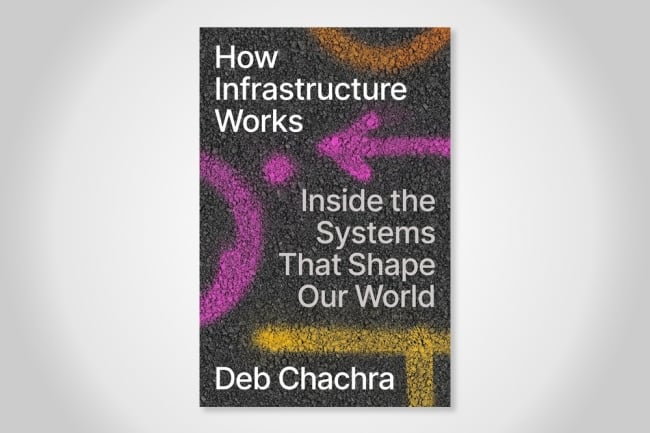You have /5 articles left.
Sign up for a free account or log in.

Penguin Random House
How Infrastructure Works: Inside the Systems That Shape Our World, by Deb Chachra
Published in October 2023.
There is a lovely section in How Infrastructure Works when Professor Chachra brings her Olin College students on a journey of infrastructural discovery. Running beneath the campus is the Sudbury Aqueduct, a 16-mile-long century-old water tunnel. Chachra students are delighted to discover the hidden-in-plain-sight civilization-enabling infrastructure that exists, largely unnoticed and unseen, all around us.
How Infrastructure Works is a book-length love letter to the systems that underpin modern life. We rarely consider the degree to which our health, safety and happiness depend on access to reliable electricity, heat, clean water and waste disposal.
As a professor of engineering and a lifelong infrastructure nerd, Chachra is well-equipped, through expertise and interest, to notice and understand how all these systems function.
How Infrastructure Works also warns about the consequences of infrastructural breakdown and fragility. As Chachra explains, our essential infrastructure was built with the assumptions of climate stability. Electricity transmission lines and substations were designed to operate within temperature parameters that no longer match the climate change–driven fluctuations of extreme heat and intense storms.
Until reading How Infrastructure Works, I had not fully grasped how all infrastructural systems, from our roads to the power grid to our municipal water systems, depend on climate stability to operate.
We tend to think of infrastructure decay as a matter of inadequate public investment, and this is still true. Even with the 2021 Bipartisan Infrastructure Deal (Infrastructure Investment and Jobs Act), years of inadequate funding have resulted in the American Society of Civil Engineers (ASCE) giving the U.S. an infrastructural overall grade of “C–“.
Higher education has an opportunity to think and talk about our physical campuses as infrastructure. Our campus power plants, rooftop solar panels, geothermal heat sources and connections to the grid are essential enablers of teaching and research. We should understand the sources, composition and impact of the electricity, heat and water on which higher education depends.
How will climate instability impact the infrastructure on which universities rely?
What infrastructural changes must we invest in now to prepare for the ever-more-likely unstable climate of the future?
Until now, my answer to those questions was to tell people to read Bryan Alexander’s indispensable Universities on Fire.
Having read How Infrastructure Works, I’d add Deb Chachra’s book to Alexander’s as required reading for conversations about higher ed and climate change.
What are you reading?




